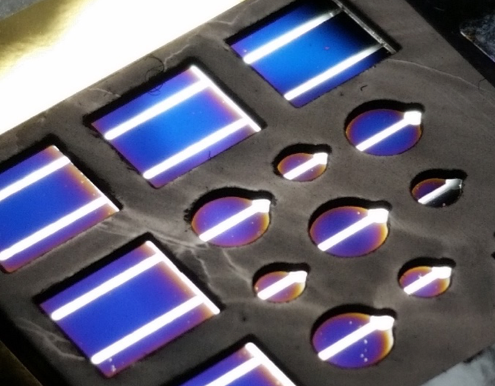D. Ding, et al., J. Appl. Phys. 110, 123104 (2011).
A semi-analytical model is constructed for single- and multi-junction solar cells. Four typical planar structures with the combinations of a smooth/textured top surface and an absorbing/reflecting substrate (or backside surface) are investigated. The below-bandgap tail absorption increases the short-circuit current but decreases the output and open-circuit voltage. Two important design rules for both single- and multi-junction solar cells are established: i) the optimal junction thickness decreases and the optimal bandgap energy increases when nonradiative recombination increases; and ii) the optimal junction thickness increases and the optimal bandgap energy decreases for higher solar concentrations
SN Wu, et al., Prog. Photovolt. Research and Apps., 18 (5), 328-333, (2010).
Four-junction solar cells are designed using lattice-matched II–VI (ZnCdSeTe) and III–V (AlGaAsSb) semiconductors grown on GaSb substrates. These materials have a zinc blende crystal structure, similar thermal expansion coefficients, and bandgaps that cover the entire solar spectrum. Numerical simulations of the energy conversion efficiencies of various designs for both the AM0 and AM1.5D spectra are performed using published material parameters. These results indicate that the achievable 1 sun AM0 efficiency is 43% for an optimal design and 40% for a more practical design; for comparison the ideal limit provided by Henry’s model is 49%. While for the AM1.5D spectrum an optimal design can reach 46% under 1 sun and 55% under 1000 suns while a more practical design can reach 44 and 54%, respectively; for comparison Henry’s model gives 51 and 62%, respectively.



